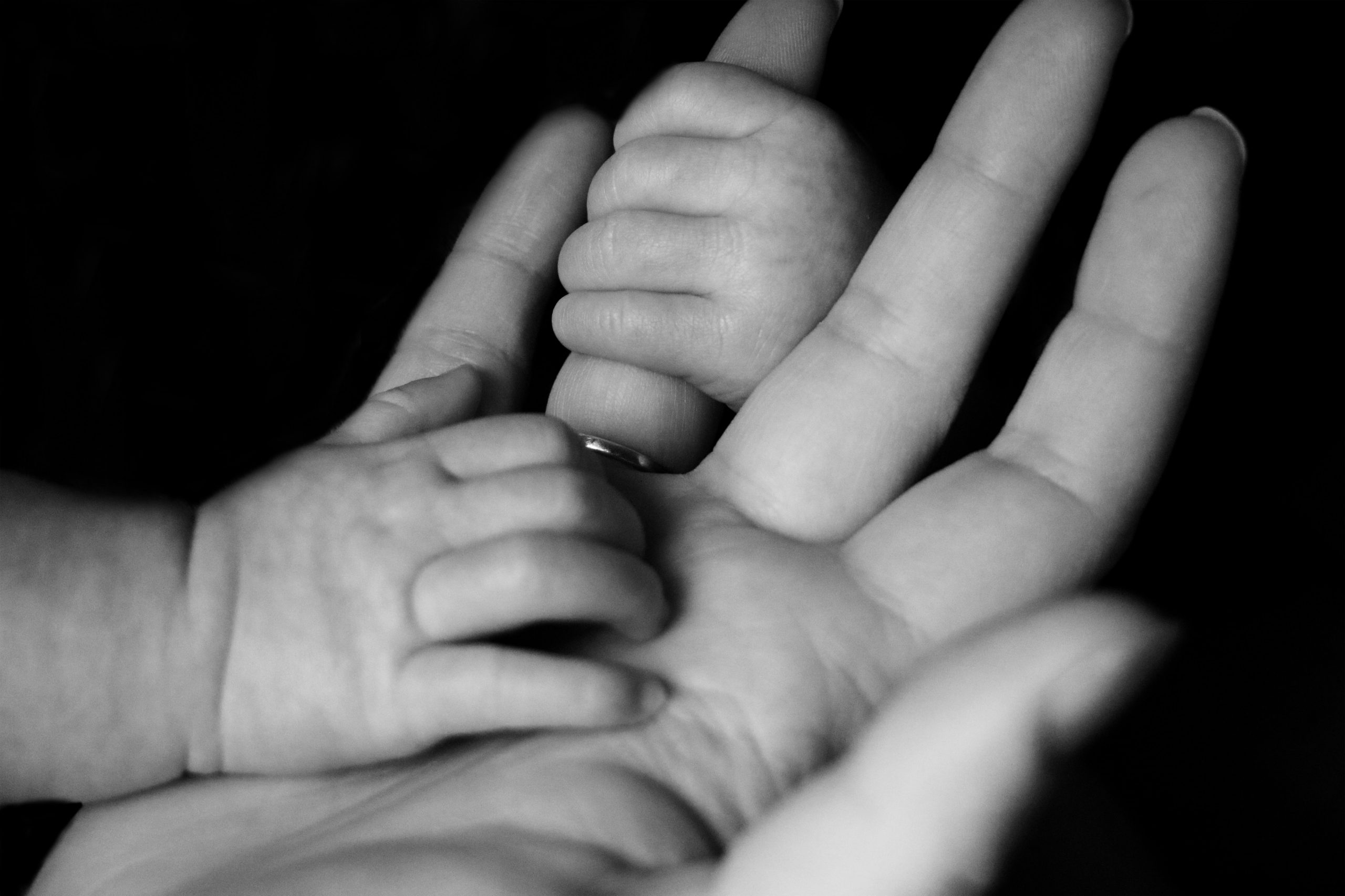
As a part of society, we inevitably interact with other people on a daily basis. It is also natural for us, as human beings, to look for support, comfort, care, and a sense of belonging in our relationships with others (Baumeister, 2011). It can be noticeable that everyone may have a different pattern for building and maintaining social connections. Believe it or not, the patterns of adult relationships can be affected by how people were raised and attached to their caregivers during their early childhood (Richards & Schat, 2010; Scrima et al., 2015).
The patterns of adult relationships can be affected by how people were raised.
In the 50s, John Bowlby first established the attachment theory and pointed out that infants have an innate capacity to emit signals and maintain proximity to protective adults or “attachment figures” in order to survive (Bowlby, 1958; Lamb & Lewis, 2011). Based on the fundamental concept of attachment between infants and caregivers, contemporary scholars define attachment styles as two dimensions of anxiety and avoidance (e.g., Brennan et al., 1998; Mikulincer et al., 2003). A low score on the dimension of avoidance and anxiety may reflect a secure attachment style, which can be nurtured by sensitive and responsive caregivers who devoted to meet their children’s needs (Mikulincer et al., 2003). Young children with a secure attachment style may have a high level of comfort and confidence in the relationship with their caregivers (Levy et al., 2011). However, high scores on the dimensions of avoidance and anxiety dimensions may reflect insecure attachment styles that can be caused by inconsistent and unresponsive caregiving behaviors from parents (Shaver & Mikulincer, 2002). Specifically, young children with an avoidant attachment tend to be reluctant to seek support and comfort from caregivers (Rholes et al., 2006), whereas anxious attachment describes a strong desire of infants for help and intimacy with caregivers that comes along with fear of rejection to this desire (Mikulincer, 1995; Jordan, 2009).
All the above attachment styles develop during early childhood and have shown to have profound and lifelong impacts on one’s social life. For example, adolescent who reported high scores on the dimensions of avoidance and anxiety attachment towards their parents also experienced negative interactions with their friends (Wong et al., 2020). Adults with a secure attachment are more likely to consider their partners as trustworthy friends (Hazan & Shaver, 1978). People who have a secure attachment style also tend to establish a positive relationship with coworkers and perform effective workplace behavior (Scrima et al., 2015). Conversely, avoidant adults often perceive others as unavailable and they tend to be self-reliant and disengaged from affiliations with co-workers (Richards & Schat, 2010), whereas anxious adults tend to easily fall in love, expect their partner’s reciprocation, and display dysfunctional interaction patterns with others (Hazan & Shaver, 1978).
In sum, we may conclude that secure attachment benefits all age groups in social activities, but how does one establish such an optimal attachment style? For infants, the consistency of a caregiver’s presence and availability matters the most for nurturing a secure attachment (Lamb & Lewis, 2011). In other words, caregivers need to be attentive to infants and meet their needs in order to foster a secure attachment. What about the adults who have already developed one of the insecure attachment styles? Fortunately, attachment insecurity can be altered over time by having a steady relationship with a partner who fosters great security (Arriaga et al., 2018).
With all the information above, how would you describe your attachment style?
Comment les expériences de la petite enfance affectent-elles votre vie sociale?
En tant que membre de la société, nous interagissons inévitablement avec d’autres personnes au quotidien. Il est également naturel pour nous, en tant qu’êtres humains, de rechercher du soutien, du confort, des soins et un sentiment d’appartenance dans nos relations avec les autres (Baumeister, 2011). On peut remarquer que chacun peut avoir un modèle différent pour établir et maintenir des liens sociaux. Croyez-le ou non, les modèles de relations adultes peuvent être affectés par la façon dont les gens ont été élevés et attachés à leurs soignants pendant leur petite enfance (Richards & Schat, 2010; Scrima et al., 2015).
Les modèles de relations adultes peuvent être affectés par la façon dont les gens ont été élevés
Dans les années 1950, John Bowlby a été le premier à établir la théorie de l’attachement et à souligner que les nourrissons ont une capacité innée à émettre des signaux et à rester à proximité d’adultes protecteurs ou de “figures d’attachement” afin de survivre (Bowlby, 1958; Lamb & Lewis, 2011). À partir du concept fondamental de l’attachement entre les nourrissons et les personnes qui s’en occupent, les chercheurs contemporains définissent les styles d’attachement comme deux dimensions d’anxiété et d’évitement (p. ex., Brennan et al., 1998; Mikulincer et al., 2003). Un score faible sur la dimension de l’évitement et de l’anxiété peut refléter un style d’attachement sécurisant, qui peut être favorisé par des soignants sensibles et réceptifs qui se dévouent pour répondre aux besoins de leurs enfants (Mikulincer et al., 2003). Les jeunes enfants ayant un style d’attachement sécurisant peuvent avoir un niveau élevé de confort et de confiance dans la relation avec leurs soignants (Levy et al., 2011). Cependant, des scores élevés aux dimensions d’évitement et d’anxiété peuvent refléter des styles d’attachement insécurisés qui peuvent être causés par des comportements de soins incohérents et peu réactifs de la part des parents (Shaver & Mikulincer, 2002). Plus précisément, les jeunes enfants ayant un attachement évitant ont tendance à être hésitants à chercher du soutien et du réconfort auprès des personnes qui s’occupent d’eux (Rholes et al., 2006), tandis que l’attachement anxieux décrit un fort désir des nourrissons d’obtenir de l’aide et de l’intimité auprès des personnes qui s’occupent d’eux, qui est accompagné d’une peur du rejet de ce désir (Mikulincer, 1995; Jordan, 2009).
Tous les styles d’attachement mentionnés ci-dessus se développent pendant la petite enfance et il a été démontré qu’ils ont un impact profond et durable sur la vie sociale d’une personne. Par exemple, les adolescents qui ont obtenu des scores élevés dans les dimensions d’attachement d’évitement et d’anxiété envers leurs parents ont également connu des interactions négatives avec leurs amis (Wong et al., 2020). Les adultes ayant un attachement sécurisant sont plus susceptibles de considérer leur partenaire comme un ami digne de confiance (Hazan & Shaver, 1978). Les personnes qui ont un style d’attachement sécurisant ont également tendance à établir une relation positive avec leurs collègues de travail et à adopter un comportement efficace sur le lieu de travail (Scrima et al., 2015). À l’inverse, les adultes évitants perçoivent souvent les autres comme indisponibles et ils ont tendance à être autonomes et désengagés des affiliations avec leurs collègues (Richards & Schat, 2010), tandis que les adultes anxieux ont tendance à tomber facilement amoureux, à attendre la réciprocité de leur partenaire et à afficher des schémas d’interaction dysfonctionnels avec les autres (Hazan & Shaver, 1978).
En résumé, nous pouvons conclure que l’attachement sécurisant est bénéfique pour tous les groupes d’âge dans les activités sociales, mais comment établir ce style d’attachement optimal? Pour les nourrissons, c’est la constance de la présence et de la disponibilité de la personne qui s’occupe d’eux qui importe le plus pour établir un attachement sécurisant (Lamb & Lewis, 2011). En d’autres termes, les soignants doivent être attentifs aux nourrissons et répondre à leurs besoins afin de favoriser un attachement sécurisant. Qu’en est-il des adultes qui ont déjà développé l’un des styles d’attachement insécure ? Heureusement, l’insécurité de l’attachement peut être modifiée au fil du temps en ayant une relation stable avec un partenaire qui favorise une grande sécurité (Arriaga et al., 2018).
Avec toutes les informations ci-dessus, comment décririez-vous votre style d’attachement?
Arriaga, X. B., Kumashiro, M., Simpson, J. A., & Overall, N. C. (2018). Revising working models across time: Relationship situations that enhance attachment security. Personality and Social Psychology Review, 22(1), 71–96. https://doi.org/10.1177/1088868317705257
Baumeister, R. F. (2012). Need-to-belong theory. In P. A. M. Van Lange, A. W. Kruglanski, & E. T. Higgins (Eds.), Handbook of theories of social psychology (pp. 121–140). Sage Publications Ltd. https://doi.org/10.4135/9781446249222.n32
Bowlby, J. (1958). The nature of the child’s tie to his mother. International Journal of Psychoanalysis, 39, 350-371.
Brennan, K. A., Clark, C. L., & Shaver, P. R. (1998). Self-report measurement of adult attachment: An integrative overview. In J. A. Simpson & W. S. Rholes (Eds.), Attachment theory and close relationships (pp. 46–76). The Guilford Press.
Hazan, C., & Shaver, P. (1987). Romantic love conceptualized as an attachment process. Journal of Personality and Social Psychology, 52(3), 511. https://doi.org/10.1037/0022-3514.52.3.511
Jordan, M. (2009). Nature and self—An ambivalent attachment? Ecopsychology, 1(1), 26–31. https://doi.org/10.1089/eco.2008.0003
Lamb, M.E. & Lewis, C. (2011). The role of parent-child relationships in child development. In M.E. Lamb & M.H. Bornstein (Eds.), Social and personality development: An advanced textbook (pp. 259-308). Psychology Press.
Levy, K. N., Ellison, W. D., Scott, L. N., & Bernecker, S. L. (2011). Attachment style. Journal of clinical psychology, 67(2), 193-203. https://doi.org/10.1002/jclp.20756
Mikulincer, M. (1995). Attachment style and the mental representation of the self. Journal of Personality and Social Psychology, 69(6), 1203–1215. https://doi.org/10.1037//0022-3514.69.6.1203
Mikulincer, M., Shaver, P. R., & Pereg, D. (2003). Attachment theory and affect regulation: The dynamics, development, and cognitive consequences of attachment-related strategies. Motivation and Emotion, 27(2), 77–102. https://doi.org/10.1023/A:1024515519160
Rholes, W. S., Simpson, J. A., & Friedman, M. (2006). Avoidant attachment and the experience of parenting. Personality and social psychology bulletin, 32(3), 275-285. https://doi.org/10.1177/0146167205280910
Richards, D. A., & Schat, A. C. H. (2010). Attachment at (not to) work: Applying attachment theory to explain individual behavior in organizations. Journal of Applied Psychology, 96(1), 169. https://doi.org/10.1037/a0020372
Scrima, F., Di Stefano, G., Guarnaccia, C., & Lorito, L. (2015). The impact of adult attachment style on organizational commitment and adult attachment in the workplace. Personality and Individual Differences, 86, 432–437. https://doi.org/10.1016/j.paid.2015.07.013
Shaver, P. R., & Mikulincer, M. (2002). Attachment-related psychodynamics. Attachment & Human Development, 4(2), 133–161. https://doi.org/10.1080/14616730210154171
Wong, T. K., Konishi, C., & Cho, S. B. (2020). Paternal and maternal attachment: A multifaceted perspective on adolescents’ friendship. Journal of Child and Family Studies, 29(1), 217–226. https://doi.org/10.1007/s10826-019-01552-z



